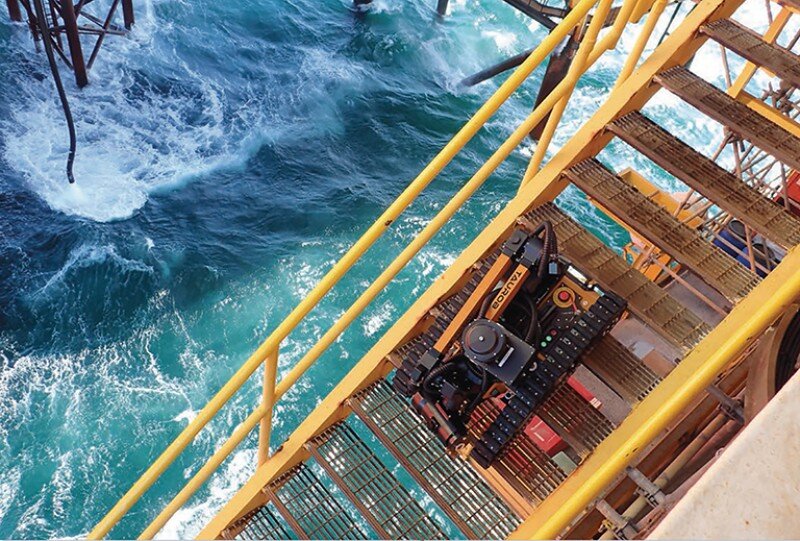Robots’ Role in Oil and Gas
/Robots have been crawling their way onto offshore platforms and down into underground wells and tanks for years. The industry has been talking about the robot boom, even as adoption has come and gone in waves.
At this point, robots seem to be a staple in the industry, even with limited scopes of responsibility. New innovations are expanding robotic capabilities, shifting the job and skills landscapes, and carving out a niche in oil and gas.
Zero Sum Game?
For many oil and gas companies, so far, the idea of driving efficiencies through software is generally more attractive than robotics are.
According to a PricewaterhouseCoopers (PwC) survey, AI-based logistics, analytics, and machine learning, as well as cloud computing, wireless networks, and the Internet of Things have all seen more implementations and pilot tests than oil and gas robots. The study found that of the 200 oil and gas companies surveyed, less than 20% had implemented any kind of robotics program and only a sliver said they were in the midst of pilot programs.
A report on “The Future of Work,” which was commissioned by the American Petroleum Institute and led by IHS Markit, also found that while robotics is an area of interest, it is not the top priority for the upstream sector. Robotics and drones receive more attention from larger exploration companies while smaller producers focus the bulk of their technology budgets on digitization and automation.
Despite these findings, IHS says robots and drones are on track to become “force multipliers within the oil and gas industry” and may even reach maturity prior to many AI applications.
All of these technologies work together—the industry doesn’t have to choose at the exclusion of robots.
Jobs and Skills
When robots come up in discussion, the fear that they will replace human jobs often comes up. Economic turmoil in 2020 brought this to the forefront. Ed Tovar, who runs an Austin-based InTechSys, recalled a recent U.S. onshore upstream research project involving unmanned cargo aircraft that was halted “due to the optics” of adopting job-replacing robots in the middle of industry-wide layoffs.
Sumit Yadav, an energy service analyst at Rystad Energy, points out that “the downturn was definitely more destructive,” in terms of jobs, and adds, “while it sounds like a doomsday scenario, I believe that in many cases these robots will have complementary work roles” to human operators.
Inspection Projection
Inspection-related activities have been both the chief strength and upper limit for much of the current generation of robots. Drone inspection is the current niche for many land, water, and sea robots. But new developments, with pushes from user requests, are promoting robots that can take action (e.g., do repairs) based on inspection findings.
Up-and-coming Innovations
Robotics companies are expanding their machines’ capabilities to help oil and gas companies with more and more—moving far beyond inspection.
Taurob From Journal of Petroleum Technology
The Stevie-2, a robot built by Taurob and part of the Total Energies ARGOS Project, is in testing as part of an effort to introduce an autonomous offshore work-class robot that can “operate a low-complexity production site like a wellhead platform of a well pad” by 2024.
The Eelume, named for its eel-like appearance, was designed to reduce the need for support vessels and traditional remotely operated vehicles to check on subsea systems. The robot is scheduled for a final round of tests this year with Equinor at its Åsgard oil and gas field.
The Nautilus is a pipeline and flowline repair robot that extracts portions of leaking or corroded pipe and then replaces them with new ones using composite material and 3D printing. The creators—the venture capital arm of Thailand’s state-owned oil and gas company PTTEP and Norwegian robotics firm Kongsberg Ferrotech—are working with Equinor on advanced testing.
Petrobras is working with partners in Brazil on a robot called Annelida that is designed to remove hydrate and paraffin plugs from offshore flowlines. The robotic tool is envisioned to be loaded into a flowline from a floating platform where it will move via tractor systems down to clean hydrates and waxes. The robot would replace current options like depressurizing the flowlines, using heated lines, and chemical injections—all of which may not be effective and are expensive.
The adoption of robots in oil and gas hasn’t been automatic, but it’s rolling, flying, and swimming forward.




